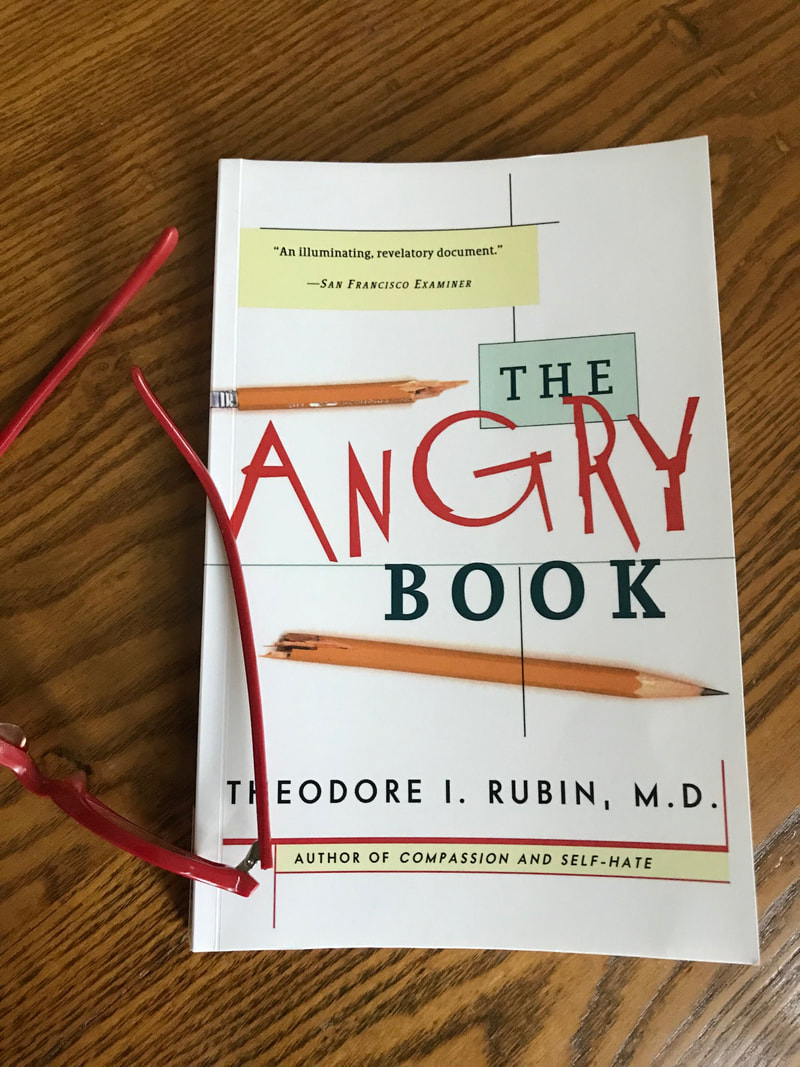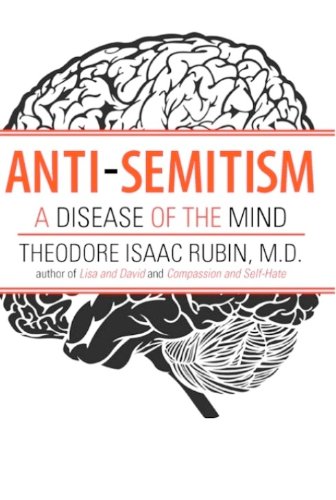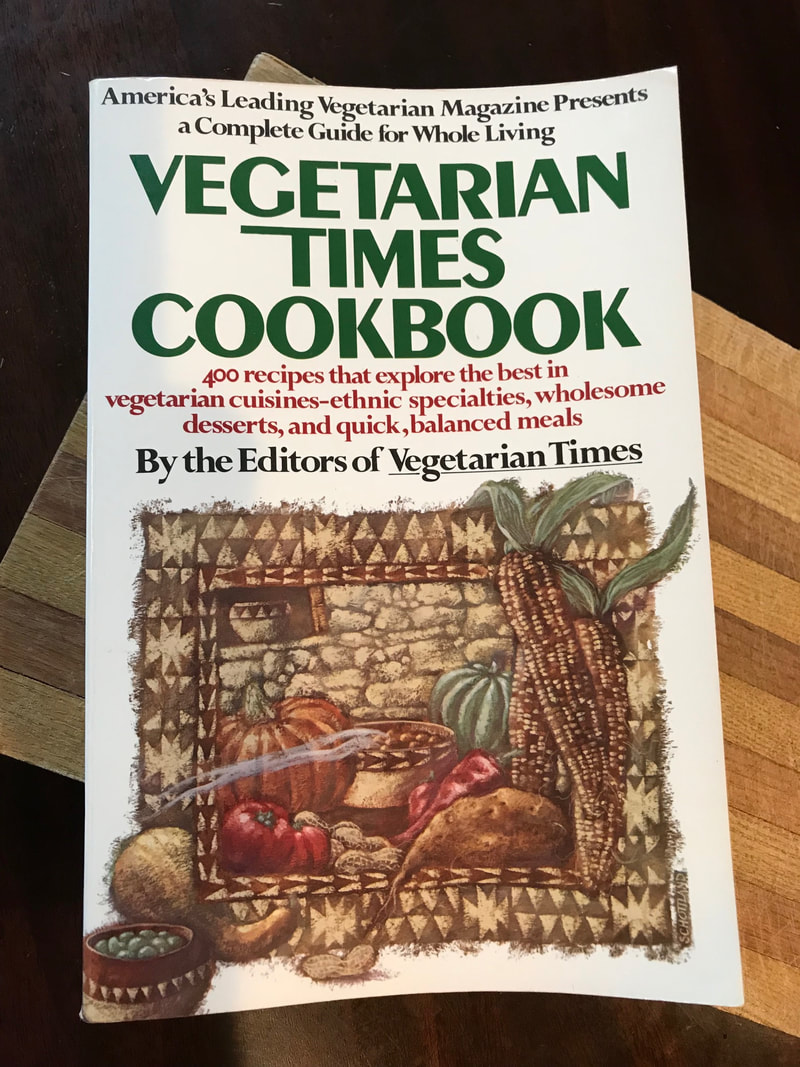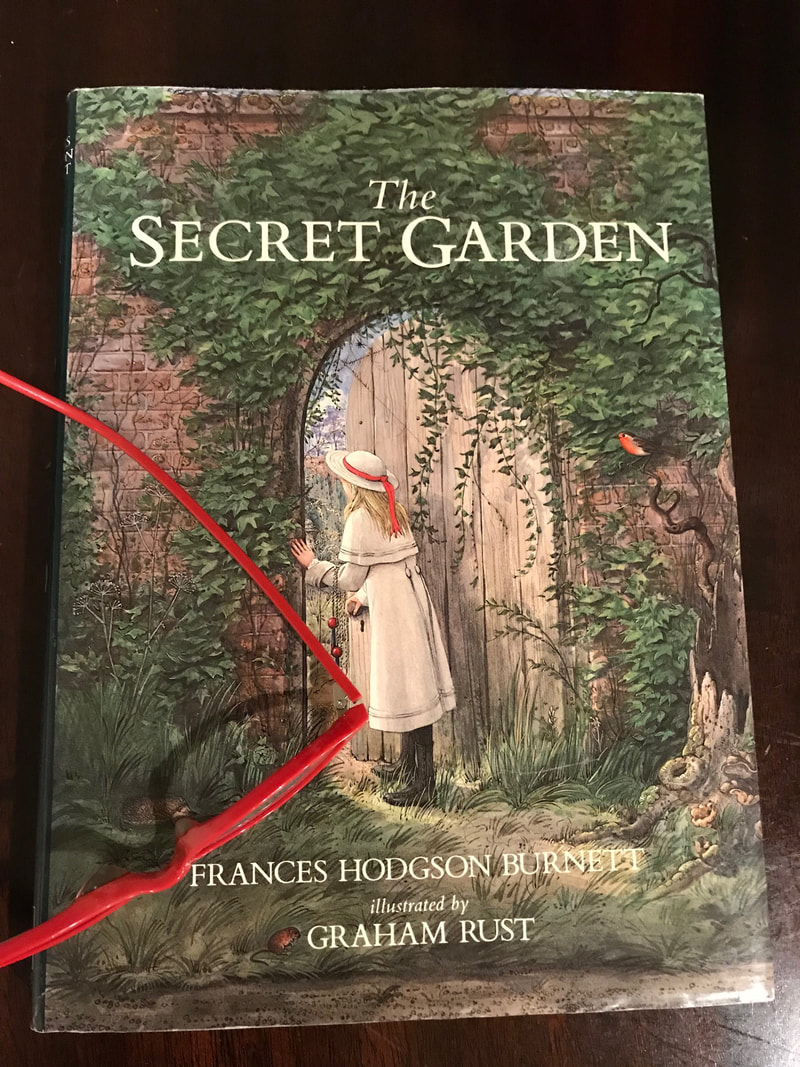Archived Blogs
|
Everyone knows Fred Rogers (aka Mister Rogers). But after reading about his background and accomplishments, I wanted to know…how did he become the man he was? And then I found a copy of one of his letters listing ten books that influenced him. Here’s the list.
So I’ve been checking them out and now I’m on number #7. You can read my first blog here. Not everybody appreciates poetry. To me, it feels extravagant. It’s something to be savored and reflected on. It’s not like reading a page-turner by James Patterson or Dan Brown—one with a plot that drives you to the completion of the story. No, poetry is a fine wine that most of us don’t indulge in. Robert Frost was the winner of four Pulitzer Prizes for poetry (the only poet to have accomplished this). He’s considered by many to be the greatest American poet of the twentieth century. I’ve read some of his work and I imagine you have to…sometime back in high school or college. Stopping by the Woods on a Snowy evening is probably familiar. Its last four lines are amongst the most quoted lines in poetry. Whose woods these are I think I know. His house is in the village, though; He will not see me stopping here To watch his woods fill up with snow. My little horse must think it queer To stop without a farmhouse near Between the woods and frozen lake The darkest evening of the year. He gives his harness bells a shake To ask if there is some mistake. The only other sound's the sweep Of easy wind and downy flake. The woods are lovely, dark and deep, But I have promises to keep, And miles to go before I sleep, And miles to go before I sleep. You’ve probably also heard The Road Not Taken : Two roads diverged in a yellow wood, And sorry I could not travel both And be one traveler, long I stood And looked down one as far as I could To where it bent in the undergrowth; Then took the other, as just as fair, And having perhaps the better claim Because it was grassy and wanted wear, Though as for that the passing there Had worn them really about the same, And both that morning equally lay In leaves no step had trodden black. Oh, I kept the first for another day! Yet knowing how way leads on to way I doubted if I should ever come back. I shall be telling this with a sigh Somewhere ages and ages hence: Two roads diverged in a wood, and I, I took the one less traveled by, And that has made all the difference. What was it about this poetry that made it inspirational to Rogers?
First, I believe that when you read Frost’s poetry, it can instill a certain quietness to your soul. Rogers was a busy man and probably craved a little of the peace that these poems provided. It reminds me of a quote… You should sit in meditation for 20 minutes unless you’re busy... and then you should meditate for an hour. Secondly, Robert Frost did not get ‘stuck-up’ with his poems. He used a naturally spoken language that was different from what we’re used to in published works. And his poems gave a realistic, gentle depiction of rural life. Frost said that a poem is “never a put-up job…It begins as a lump in the throat, a sense of wrong, a homesickness, a loneliness. It is never a thought to begin with.” Fred Rogers said… “When I think of Robert Frost's poems, like "The Road Not Taken", I feel the support of someone who is on my side, who understands what life's choices are like, someone who says, "I've been there, and it's okay to go on”.” Finally, John Durham Jr wrote “…as more and more has been written about Frost, it has become increasingly evident that critics cannot agree on the major themes of Frost’s poetry..” Just like The Little Prince, different readers have different impressions from Robert Frost’s poetry. Is The Road not Taken speaking about a literal road or is it a moral lesson to ‘follow your own path’? Fred Rogers seemed to appreciated literature that was modest on the surface…but with more investigation…simple facts, objects and people take on more significance. William Shakespeare is next... That should be interesting. PS. Rogers created a show for adults called Old Friends, New Friends in which he interviewed people about their search for meaning in life. One of his guests was Lesley Frost Ballantine, the daughter of Robert Frost and a poet herself.
0 Comments
Everyone knows Fred Rogers (aka Mister Rogers). But after reading about his background and accomplishments, I wanted to know…how did he become the man he was? And then I found a copy of one of his letters listing ten books that influenced him. Here’s the list.
So I’ve been checking them out and now I’m on number #6. You can read my first blog here. The Angry Book has been the most difficult book so far and it made me, well….angry. I didn’t agree with everything the book said. The premise of the book is that behind virtually every problem you can experience—drinking too much, depression, frequent injuries, not sleeping, feeling guilty, anxiety—is the fact that you are harboring anger and not releasing it in a healthy fashion. First, I was confused, having been told (and believed) that behind a lot of anger is depression, insecurity or fear. The author, Theodore Rubin MD, was saying just the reverse. I was frustrated… and I was only a third into the book. I’d just finished a section of the book called ‘Self-Sabotage’ which dealt with the issue of self-hate. One section, in particular, made me roll my eyes: A very blatant form of self-hate is accident proneness. Its victims are somehow involved in accident after accident with no awareness of their purposeful involvement. I put the book down in disgust, turned on the tv… and started watching a PBS program about Margaret Mitchell— the author of Gone with the Wind. The biography started with her childhood and from the beginning we’re told that Margaret’s mother was not as affectionate as Margaret would have liked. In fact, you get the sense that there was a serious disconnect between Margaret and her mother. Later we’re told that during her childhood, Margaret suffered an ankle injury. After that, she had a ‘series’ of ankle injuries, usually followed by a bout of depression. Holy cow. Is this what he was talking about? Margaret’s mother died of influenza (get those flu shots!) during her daughter’s freshman year in college and Margaret didn’t make it home in time to say goodbye. Her mother did leave a note behind, but it wasn’t what you’d imagine with lots of declarations of love for her daughter. It was, more accurately, a list of instructions for Margaret to follow. Definitely unresolved issues for poor Margaret. By this time, I wasn’t surprised that Margaret continued to have ankle problems. When she took a long time to recover from one particular injury, her husband grew tired of bringing her library books to amuse herself. He insisted that she write her own book. You guessed it— Gone with the Wind. Ok, so maybe there is something to this book. But let me give you one excerpt that got my blood pressure up and see if you agree. Dr Rubin describes a young boy that is destroying department store displays. None of the salespeople can get him to stop. A store psychologist (I’ve never heard of this, by the way) whispers a few words in the boy’s ear and… …as if by magic, the storm was over. One of the salesmen eager to participate in obvious wisdom asked the psychologist what he said. He replied, “I simply said stop upsetting the store, you little—or I’ll beat your—off.” His analysis of the situation was : “The boy had been told honestly and straighforwardly, with honest respect, within what limits he could operate.” Could you imagine Fred Rogers saying that to a young, disobedient boy? Me neither. But allow me to play armchair psychologist for a minute. Dr Rubin wrote an earlier book titled Anti-Semitism: A Disease of the Mind. The book seems to claim that all anger against the Jewish race was a form of mental illness… As a child, Ted Rubin could not understand why some people hated him and his family only because they were Jews. and… As a psychiatrist, Dr Rubin learned that Anti-Semitism and other deep seated prejudices are non-organic diseases of the mind: malignant emotional illnesses that can be treated by only first understanding the unique psychodynamics involved. and… Violent "acting out," in the case of anti-Semites, often results from gender confusion, homophobia and an identification with macho toughness, claims Rubin. I think Dr Rubin is the one that’s angry. So what did Fred Rogers get from this book? How could he be inspired by a book that promoted ‘losing your temper’? A blog by Tim Madigan answers that question by relating a quote from Rogers. “There’s no ‘should or ‘should not’ when it comes to having feelings. They’re part of who we are and their origins are beyond our control.” I think it was probably very interesting for Rogers to peek behind someone’s behavior and see the emotions driving it. But did Rogers agree and live by all of Rubin’s principals? The book says that ‘releasing anger can lead to greater health, happiness and emotional wholeness.' I’m sure Rogers believed that part (he recommended playing the piano) but he added an important distinction… “I’ve told the children there are many things you can do with your feelings that don’t hurt yourself or anyone else…” Anger is a risky emotion. Holding it in, diverting it, converting it or preserving it can all lead to terrible problems. But letting it loose on your offender…well, that’s not Mister Roger’s way. PS. Rogers didn’t use profanity when he was upset. Those that knew him stated that when he’d come to his office and see a mountain-sized pile of fan mail, he take one look and say ‘mercy’. That’s it…the strongest word he was ever known to say. Everyone knows Fred Rogers (aka Mister Rogers).
But after reading about his background and accomplishments, I wanted to know…how did he become the man he was? And then I found a copy of one of his letters listing ten books that influenced him. Here’s the list.
You can read my first blog here. As usual, I have theories on the reason why a cookbook made the list of books that influenced Rogers. Let’s start with his childhood. Fred Rogers was not always as slim as we are used to seeing. In fact, he was overweight—and because of that he was teased and bullied. Kids used to chase him and call him “fat Freddie”. Rogers made a decision that he was not going to be that person anymore…and he never was again. Obviously, food took a different meaning in his life. As an adult, Roger’s worked to keep his weight exactly 143 pounds. Why is that number interesting? Because Rogers liked this number…a lot. He had it sewn into the back of his sweaters and liked to call it a special code: “I” has 1 letter. “love” has 4 letters. “you” has 3 letters. Can you imagine the dedication to staying the exact same weight? Everyday he woke at 5am, read the Bible and then swam for an hour…oh, he did one other thing that helped maintain his weight… He became a vegetarian. But why? The introduction of the book gave me some clues. It starts: About ten years ago the U.S. Senate Select Committee on Nutrition, chaired by George McGovern, issued a report on the dietary status of America. The report suggested that Americans cut back on their consumption of animal fats, refined carbohydrates, and salt. What follows is a history of the food industry starting with Presbyterian minister Sylvester Graham (inventor of the graham cracker), the discovery of vitamins in 1911, the establishment of the Basic Four Food groups in 1956 and the rise of health foods in the 1970’s (from a $150 million dollar industry to $2.2 billion dollars of gross sales). He describes how "consumers now seemed to be truly concerned about the ingredients that were finding their way into our food supply" It concludes, as you’d imagine, with an argument on the superiority of the vegetarian diet. It’s pretty convincing. So, it’s possible that Rogers got swept away with the tide of interest in a healthier diet and embraced a vegetarian lifestyle like thousands of others. But I think it went beyond that. When asked to explain why he was a vegetarian he explained, “I want to be a vehicle for God, to spend his message of love and peace.” He believed in treating animals non-violently and thought we should have empathy for the ‘lesser creatures’. As I’d come to expect, his love for children likely influenced his decision too. He worried that children would be concerned about seeing an animal and later associating it with a meal. Why this book? The history of this book (found on Wiki) gave me some clues. Paul Obis, the founder of Vegetarian Times, wrote an article titled “Being a Vegetarian is Never Having to Say You’re Sorry—to a Cow”. When he was unsuccessful in selling the article, he turned it into a newsletter. The newsletter grew into a magazine and despite a somewhat turbulent history, the readership grew to over 250,000 people. This was a new way of looking at the American diet and it’s popularity was on the rise. Vegetarian Times was, by default, the main source of information since the magazine had no competition on this topic in the 1980’s. During those rocky times I mentioned, guess who stepped up to provide some financial backing? That’s right. As I discovered, it wasn’t unusual for Rogers to support individuals or businesses that he believed in. And by all accounts, he was passionate about this topic. But let me tell you a little more about the book (which is a collection of recipes from the magazine). It has four pages of acknowledgments- crediting the original source of the recipes. I found that quite interesting since you just don’t see that anymore. Just take moment and look up a Chocolate Lasagna recipe and you will find dozens of webpages without any idea where the recipe originated. (and then make it because it’s pretty yummy) I used to have recipe cards with titles like Grandma’s Upside Down Pineapple Cake, but this list was far better. Let me tell you some of the more interesting contributors: The Cold Bean Salad came from The Cookbook for People who Love Animals. The Un-Salmon loaf came from Eat for Strength and Not for Drunkenness. The Vegetarian Stew came from Eating to Win. A Carob Icing recipe was taken from XXIII World Vegetarian Congress Cook Book. Several recipes featuring pumpkin including Tofu Pumpkin Pie (I shuddered a little) came from The Soy of Cooking: A Tofu and Tempeh Recipe Book. As someone who owns The Joy of Cooking…I got the joke. I’m going to try some of the recipes but not all of them. There’s a whole section devoted to carob desserts. I’ve always consider carob (a chocolate substitute) a terrible, regrettable phase in the history of cooking. But back to the topic… Finally, I believe that Fred Rogers embraced vegetarianism as a way of honoring God. I listened to a sermon titled “Body by God” by Ed Young at Fellowship Church years ago. A luxury car was used as a prop on the stage and the gist of the message was that you don’t put cheap gas in an expensive car. It was a great sermon and brought home a really important fact. We should be eating healthy food to take care of the body that has been given to us. I can’t confirm that Rogers actually believed that…but it fits with the way he thought…so I’m going with it. The fifth book is The Angry Book and I’m having a hard time thinking about Fred Rogers and the topic of anger… PS. Fred Roger’s sweater and tennis shoes became an image that was both familiar and comforting to viewers but he had a very specific reason for wearing those shoes. As one website said…his “sneakers were for sneaking”. Most of the puppets in Mister Roger’s Neighborhood were performed by Rogers himself and he found that canvas shoes were quieter for the backstage work necessary in maneuvering without making a sound. Everyone knows Fred Rogers (aka Mister Rogers).
But after reading about his background and accomplishments, I wanted to know…how did he become the man he was? And then I found a copy of one of his letters listing ten books that influenced him. Here’s the list.
So I’ve been checking them out and now I’m on number #4. You can read my first blog here. The Secret Garden is another children’s book…or is it? The book was written 1910 and released by the chapter in “The American Magazine” —a publication for adults. But since then, its been considered one of the best children’s books of the twentieth century. So I guess you could say it was written for both children and adults. The story is about an orphan, sullen and angry, who arrives at her uncle’s house when her parents die. She makes several discoveries—including a boy who is bedridden and a garden that is locked up. There is a theme, or lesson, and one could argue that it was the psychology of the book that was appealing to Rogers. But he read text books in psychology and had almost daily discussions with a child psychologist, so this simple message was unlikely to be the reason it made the list. The book is beautifully illustrated. Every couple of pages allows you the opportunity to admire either a black and white or colorized etching of the described scene. I found myself captivated by the pictures as much as the story. But I don’t imagine the art work was the reason he picked this book either. The story draws you in slowly. It’s a sweet tale of an angry girl who confronts an equally angry boy and both of them come out all the better for their friendship. The garden deserves a special mention…but more about that later. There’s been other sweet, innocent tales, so I don’t think the actual plot is why he listed this book as number 4. On page 95 I knew, with almost absolute certainty, why Rogers gave such importance to this book. Don’t bother turning to that page, or any of the other 224 pages, to find any particular phrase or description. You have to read the book…and then you will see that this author has the uncanny ability to transport you back to your own childhood. Honestly. And if you are making it your mission to grow children into confident and caring human adults, it helps if you can remember what it was like to be young. I picture him reading this to prepare for the show… to think like a child…to conjure up the pangs of loneliness, the delight of discovery and heart-pounding excitement of childhood shared secrets. I wonder if the book didn’t have another draw to it too. In the book itself, they call it …Magic. It’s Magic that allows the bedridden, crippled boy to walk. I wonder if Rogers sensed there was something real about the Magic. Because there is. And it’s in the garden. In his book Last Child in the Woods, Richard Louv says the lack of nature in our children’s lives is driving the rise in obesity, attention disorders and depression. Over sixty studies have shown the benefit that nature provides to children in reducing stress, promoting social skills and increasing cognitive thinking. As a pediatrician, I’m getting advised by journal articles to start writing prescriptions for play. Before you jump to the conclusion that children get plenty of play time…you better understand the definition we are talking about. Play has been difficult to define. But for the sake of these discussions, it must produce joy, activity and engagement. And lastly, to count as play, it must be directed by the child and not the adult. So soccer practice doesn’t count. One of the most charming parts of the book is the delight the children get from sneaking into the garden…and who wouldn’t… And over walls and earth and trees and swinging sprays and tendrils the fair green veil of tender little leaves had crept and in the grass under the trees and the grey urns in the alcoves and here and there everywhere, were touches or splashes of gold and purple and white and the trees were showing pink and snow above his head, and there were fluttering of wings and faint sweet pipes and humming and scents and scents. And the sun fell warm upon his face like a hand with a lovely touch. It’s an absolutely wonderful book. You should read it. Number 5 in the list is a cookbook! How odd is that? PS. Over a hundred years ago, when this book was written, conditions like depression, migraines and anxiety were treated with bedrest, social isolation and forced feeding. The author of this book, Frances Hodgson Burnett, suffered through more than one hospitalization for the cure. She developed a lifelong distrust of medicine and doctors, preferring instead a mind-body approach that involved spending time outside. You can read about her here. |
Archives
October 2020
Categories |
COPYRIGHT 2017 SUSAN BADARACCO | Site Credits









 RSS Feed
RSS Feed